Grand designs: Greater Adelaide Regional Plan details vision for housing, jobs growth
The Greater Adelaide Regional Plan outlines where an additional 316,000 homes – and associated infrastructure – will be located to support an extra 670,000 people over the next 30 years.
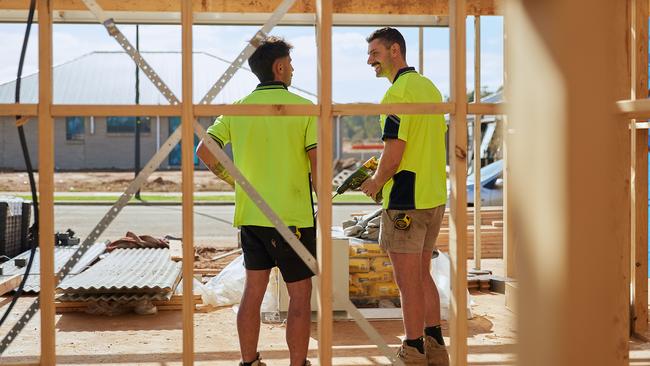
SA News
Don't miss out on the headlines from SA News. Followed categories will be added to My News.
A vision for the development of 316,000 new houses across the greater Adelaide area over the next three decades has been released by the State Government, promising to deliver much-needed housing stock with a view to creating vibrant, sustainable, green communities well-resourced by infrastructure.
The Greater Adelaide Regional Plan is the nation’s first fully digital plan of its sort, and sets a framework for the development of housing across 11,000sq km stretching from Cape Jervis to Murray Bridge and Port Wakefield, and incorporating the towns of the Barossa.
Sally Smith, deputy chief executive, planning at the Department for Housing and Urban Development, says the Plan identifies land which can be used for housing construction, employment-related development with the scope to create 254,000 new jobs, as well as the necessary infrastructure.
It also provides increased protections for 88 per cent of Adelaide’s food production areas, and will create a new Northern Park Lands, as well as open space and sporting facilities in new growth areas. Smith says the Plan aims to create vibrant new communities, well-serviced with infrastructure and social and employment opportunities. “The Plan sets housing targets to be achieved across council areas and ensure housing choice will be provided across Greater Adelaide,’’ she says. “A key theme of the Plan is living locally, which is a focus on ensuring communities are sustainable and well serviced, whether it’s renewal of an existing suburb or a new greenfield, master-planned estate.
“The Plan recognises that we need housing choice. As we continue to have an increased number of single-person households we need well-located smaller homes, but we also need family homes with room to move.’’
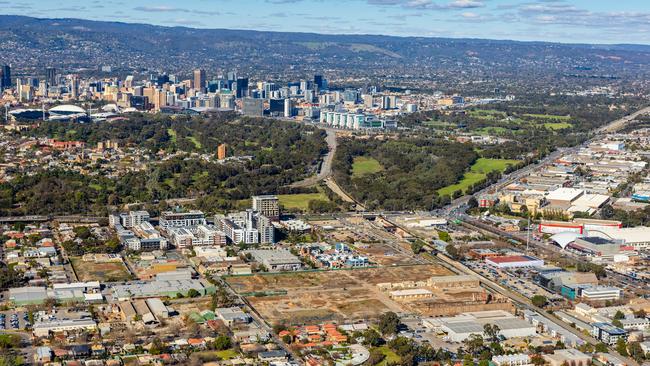
Areas that have been identified for new homes are either already connected or close to infrastructure.
Where this is not the case, future investment in infrastructure will need to be considered upfront as part of the planning process through land preservation for infrastructure to support houses and employment areas, the state government says.
The Plan will work in concert with the government’s housing roadmap, which looks at more urgent, short-term responses to increase housing supply.
“While the Plan looks to the long term it also has a focus on short-term actions, as we need to act now, and we are,’’ Smith says.
“The plan includes 56 actions that need to be completed in the next two-to-five years. This is a huge work program to help address the delivery of affordable housing and employment land to support our growing population and the delivery of the State Government’s Economic Statement. What I think we’ve achieved is a fantastic balance between providing new housing opportunities in strategic infill areas on large underutilised or vacant land that maximises existing infrastructure and services that support density, while also providing substantial greenfield pieces of land for long-term development.
“The housing pipeline in Greater Adelaide is assured and secure through the work of this Plan and the framework it sets.’’
Smith says members of the public can use the Plan to keep abreast of what will be happening in their local communities, and can even plug in their own address as a starting point.
“We’ve created an Australian-first with our digital Regional Planning portal,’’ she says. “It is an amazing tool for all South Australians to access the planning vision for the state.
“It is a single source of information and mapping that outlines in detail all the elements of the Plan – housing and liveability, productive economy, natural resources and the environment, transport and infrastructure and, importantly, how we’re going to implement it.
“The electronic plan allows you to search an address or an area and provides you with a wealth of information about the planning for that area. This provides an interactive experience as you can turn on different layers of information that are of interest to you. But if you prefer you can print a copy of the whole Plan, or tailor it to your interests.’’
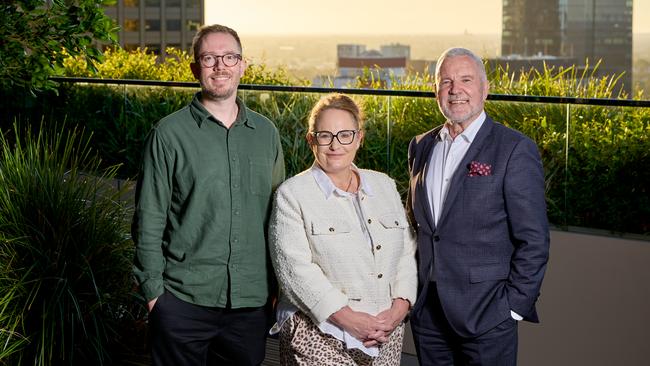
Community input key to vision
One of the key visions for the Greater Adelaide Regional Plan is to provide choice in housing options for the state’s growing population, with an extensive 18-month consultation process finding that there was demand for a wide variety of housing formats, from traditional houses to granny flats.
Representatives from the Department for Housing and Urban Development held more than 70 engagement events over 18 months to inform the design of the Plan, to ensure that it is fit for purpose both in terms of types of housing stock, but also taking into account open space and employment opportunities.
The Department’s director, strategic planning, Brett Steiner, says bringing members of the community into the conversation was vital.
“It was important to have robust discussions about something as important as the future vision for Adelaide, and to gain insights about housing needs and people’s priorities for transport, parks and other community infrastructure,’’ he says.
“We heard that the No.1 priority across Greater Adelaide was to provide a range of housing options and an affordable housing supply that meets the wide range of needs in our community. We have to encourage a mix of housing options like traditional houses, townhouses, apartments and granny flats to make sure everyone has a place to live and a home that suits them.’’
The Plan has been successful in this regard, Steiner says.
“We managed to find ample opportunities over the next 20 years to create new estates and major land releases, more opportunities for apartment living like the Adelaide CBD and strategic infill in surrounding areas that are already near transport and jobs.’’
The plan was formally launched at the Committee for Economic Development of Australia’s SA State of the State 2025 event on March 17.
Work has already started on detailed planning for new land releases for housing and industry, as well as for major new community assets like the northern parklands “to ensure that we continue Adelaide’s reputation as one of the world’s best-planned and most-liveable cities,’’ Steiner says.
The Plan has a five-year rolling implementation strategy, with the state, the development industry and councils working together “to ensure we properly plan and deliver new housing and infrastructure like transport, schools and health services in new communities’’.
“All of the actions and progress reporting can be viewed live to ensure that we are being transparent and accountable to the community about our progress,’’ Steiner says.
As well as built assets, liveability, open space and tree cover are also integrated into the plan. “Providing new open space and increased tree canopy is a key strategy that underpins our plan for the future,” Steiner says.
“Adelaide has had a strong legacy in developing great parks through government leadership and action. This Plan builds on that legacy and lays out the creation of a new Greater Adelaide Open Space system. This includes the new Northern Park Lands and also sets a new target to achieve a 30 per cent tree canopy cover across metropolitan Adelaide over the next 30 years.”
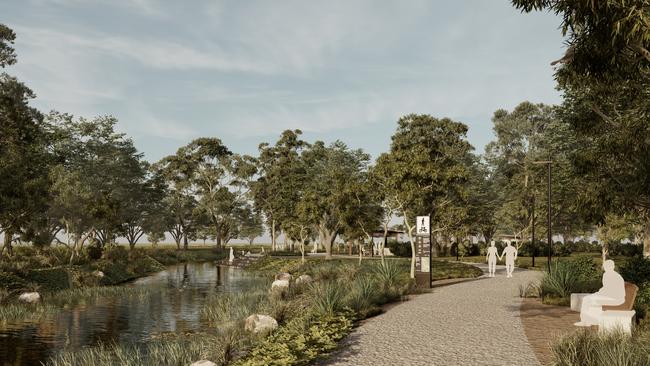
Realising a vision for Adelaide’s future
With Adelaide expected to grow by an additional 670,000 people in the next 30 years, a clear pathway to accommodate the city’s transformation is crucial.
That’s why State Planning Commission chair Craig Holden describes the Greater Adelaide Regional Plan as “the most important and state-significant strategic planning work” the independent advisory body has undertaken since its inception in 2017.
Unveiled in March, the Regional Plan identifies where 316,000 new homes and associated infrastructure will be built.
“The Greater Adelaide Regional Plan identifies where housing, employment, schools, hospitals, urban greening and all the important community amenities will be located to support thriving, sustainable communities,” Holden says.
“Importantly, it identifies where the supporting infrastructure will need to be planned and prioritised over the next 30 years to ensure these ambitions are realised.
“The Plan identifies where we will grow to support our future projected population growth to provide confidence and certainty for our community looking for secure employment and affordable housing.”

Apartments and higher-density infill housing have been earmarked along major roads and public transport centres within the plan, which also highlights seven new greenfield growth areas – Murray Bridge, Two Wells, Roseworthy, Riverlea, Kudla, Victor Harbor and Goolwa – as the location for 96,000 new homes over the next 30 years.
A new linear park of more than 500ha is also planned to run from the Hills face at Uleybury, through Evanston Gardens and along the Gawler River.
“The Plan provides certainty that Greater Adelaide will continue to be a prosperous region that delivers housing diversity and economic opportunity while protecting our natural environment,” Holden says.
The strategy followed extensive research and engagement and formed an economic and social blueprint for the Greater Adelaide region to grow and prosper. “Without a clear plan, we risk not delivering the critical housing, infrastructure, transport and services needed to accommodate the growth of the state,” Holden says. “Planning is a fundamental element of building communities that are connected, cohesive, safe and climate-smart.
“The Greater Adelaide Regional Plan gives state agencies, industry, councils and communities not only certainty about the planning future for the region but can also be the catalyst for their own strategic work and decision-making. The Plan is the foundation for our state’s economic progress.”
Unlocking doors for more homeowners
The Greater Adelaide Regional Plan is much more than a blueprint to open the doors of 316,000 new homes – it’s an opportunity to “reinstate South Australia’s competitive advantage”.
That’s the verdict of Hickinbotham Group managing director Michael Hickinbotham, pictured, who says the strategy – which identifies where SA’s housing and other infrastructure will be built during the next three decades – is a critical document, with the “potential to provide long-overdue direction for growth”.
“Done well, it can significantly ease the housing crisis by increasing supply, bringing land to market and facilitating the delivery of more homes where they’re needed,” he says. “There is a golden opportunity for South Australia to get this right.
“Every state is facing the same challenges – but high-quality, affordable communities and homes have long been a competitive advantage for South Australia.
“We need to reinstate that – and if we do, it will set up our state for the future. Get this right and South Australia won’t just keep up – we’ll set the benchmark for housing, growth and liveability.”
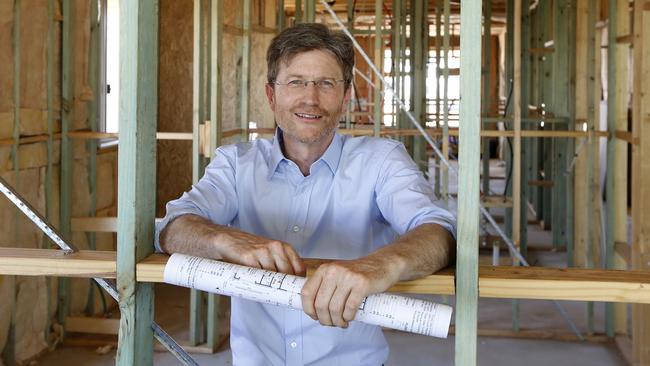
Hickinbotham, who is at the helm of South Australia’s largest residential building company, says home ownership is “one of the most significant concerns” facing many locals.
“The plan provides certainty that land will be available, and homes will be built,” he says.
“It opens the door for more South Australians to achieve home ownership and build their futures here.”
Hickinbotham says the strategy – designed to complement the State Government’s Housing Roadmap, which identifies ways of boosting housing stocks in the short-term – will open the door to a host of far-reaching economic benefits for both the local housing industry and beyond.
“In an industry affected by cost volatility and planning delays, the plan is vital for sustained investment, supply chain stability and job creation,” he says. “It follows years of uncertainty, giving industry the confidence to commit resources, scale-up activity and deliver the housing our growing population needs.
“Increasing, the supply of land and homes in strategic growth corridors will address the state’s housing shortfall, accommodate our future AUKUS workforce and support regional industry growth.
“This will underpin housing affordability and create certainty for industry to plan, invest and build.”
Hickinbotham says South Australia needs the policy clarity and long-term direction contained within the Plan.
“Without a strategy like this, we risk fragmented and reactive development,” he says.
“With it, we can deliver well-planned communities that meet demand and support economic, development and population growth.
“It must now be backed by rapid rezoning, streamlined approvals and the provision of supporting infrastructure.”
To learn more about the Greater Regional Adelaide Plan, click here.
Originally published as Grand designs: Greater Adelaide Regional Plan details vision for housing, jobs growth


